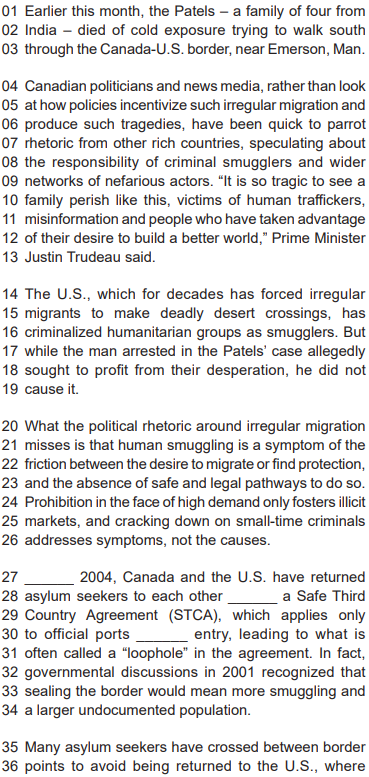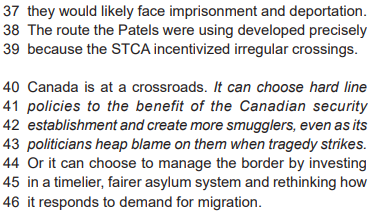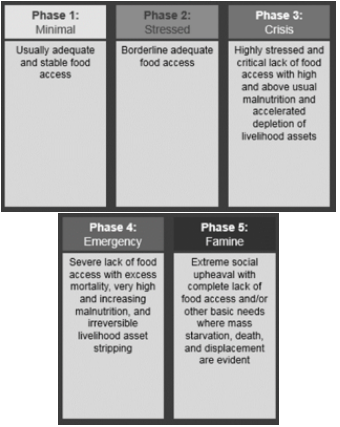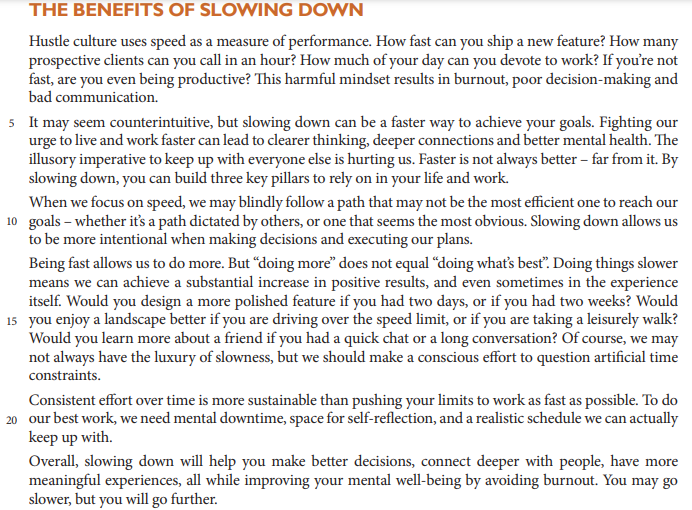Questões de Vestibular
Sobre interpretação de texto | reading comprehension em inglês
Foram encontradas 4.844 questões
The environmental and ethical implications of traditional livestock rearing, combined with an increasing global population and demand for protein-rich nutrition, has led to investments in alternative protein research. One emerging approach is cellular agriculture, in which traditional ‘meat’ tissues, such as muscle and fat cells from cows, chicken and fish, or alternative protein sources, such as algae, are cultivated under controlled laboratory conditions. However, the optimisation of these protocols is highly dependent on cell types, and further development is required to make cellular agriculture an economically viable alternative to traditional sources of protein. This special issue welcomes research on improvements to cellular agriculture protocols to maximize sustainable protein production.
(Adaptado de: https://www.nature.com/collections/chhdggaffd. Acesso em 12/05/2023.)
Qual seria o tópico específico da edição especial ao qual o texto se refere?
In some indigenous cultures, headdresses represent Native peoples’ right to govern themselves according to their own laws. The materials they are constructed with can vary greatly, including wood, iron, feathers, and ivory. Rather than using gridded designs (symbols of spiritual beliefs) or putting birds or mammals at center stage, as several others do, horns were attached to this headdress, an emblem of power reserved for those “whose exceeding worth and power is admitted by all the nation”.
(Imagens (nas alternativas) e texto (acima) adaptados de: https://americanindian.si.edu/ exhibitions/infinityofnations/introduction.html. Acesso em 31/05/2023.)
Qual das imagens corresponde à descrição da placa?
I have a dream that one day down in Alabama, with its vicious racists, with its governor having his lips dripping with the words of interposition and nullification; that one day right down in Alabama little black boys and black girls will be able to join hands with little white boys and white girls as sisters and brothers (Martin Luther King, 1963).
(Adaptado de: https://kr.usembassy.gov/martin-luther-king-jr-dream-speech-1963/. Acesso em 26/05/2023.)

Considere os dois textos e assinale a alternativa correta.
Besides these, another result of hustle culture is the one below:
The author presents a series of questions in the first paragraph.
These questions are used with the following purpose:


“It can choose hard line policies to the benefit of the Canadian security establishment and create more smugglers, even as its politicians heap blame on them when tragedy strikes.”


( ) The last sentence in Text 1 (lines 44 to 46) presents two examples of adjectives in the comparative degree. ( ) “avoid being returned” (line 36) is about an action that will/would happen while “remember being arrested” is about an action that has already happened. ( ) The two instances of the word “such” (lines 05 and 06) have the same idea as “such” in “I cannot imagine anyone living on such a small salary”.
The alternative that presents the correct top-down sequence of answers to the sentences above is




The paragraph below was taken out of Text 1.
“Just three months earlier, the U.K.’s Interior Minister blamed smugglers for the death of 31 people when a boat capsized, and vowed to pass laws to make it illegal to claim asylum.”
After which paragraph in the text can it be placed
back?
TAYLOR, A. What is the strategic planning process? Available in: https://www.smestrategy.net/blog/ what-is-the-strategic-planning-process. Access in: 28 jul. 2018 (adapted).
Consider the text information to evaluate the following statements.
I. The strategic planning process must be individual so that diverse opinions do not hinder the good organizational progress of the company.
II. The strategic planning well-designed gives greater productivity, training and overall effectiveness in the execution of executive secretary's activities.
III. The strategic planning needs to disclose the steps to the company's employees, emphasizing their contribution to the success of the plan.
It is correct what is stated in



